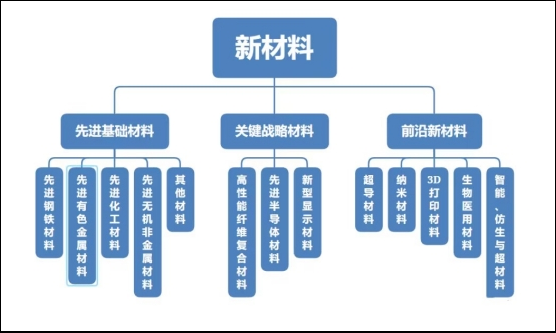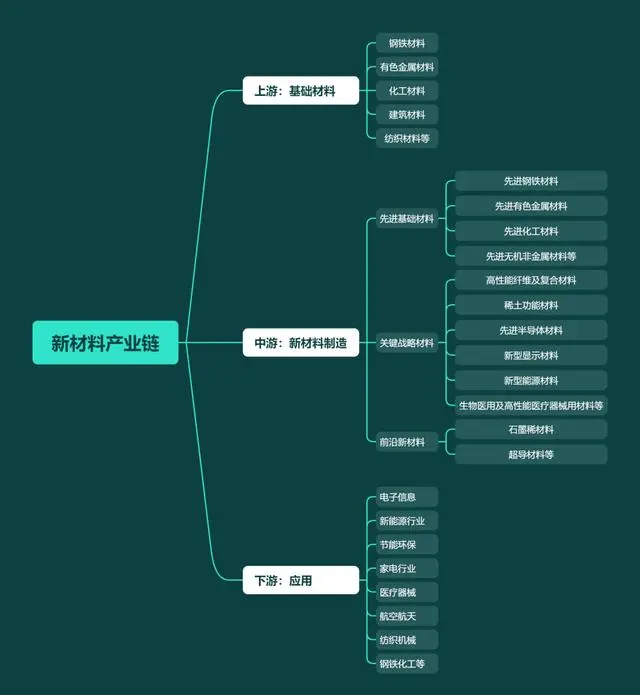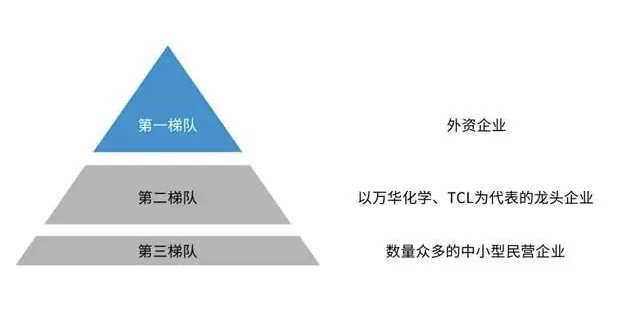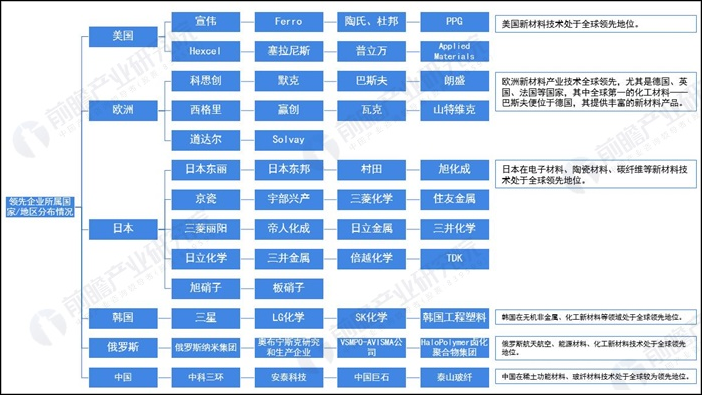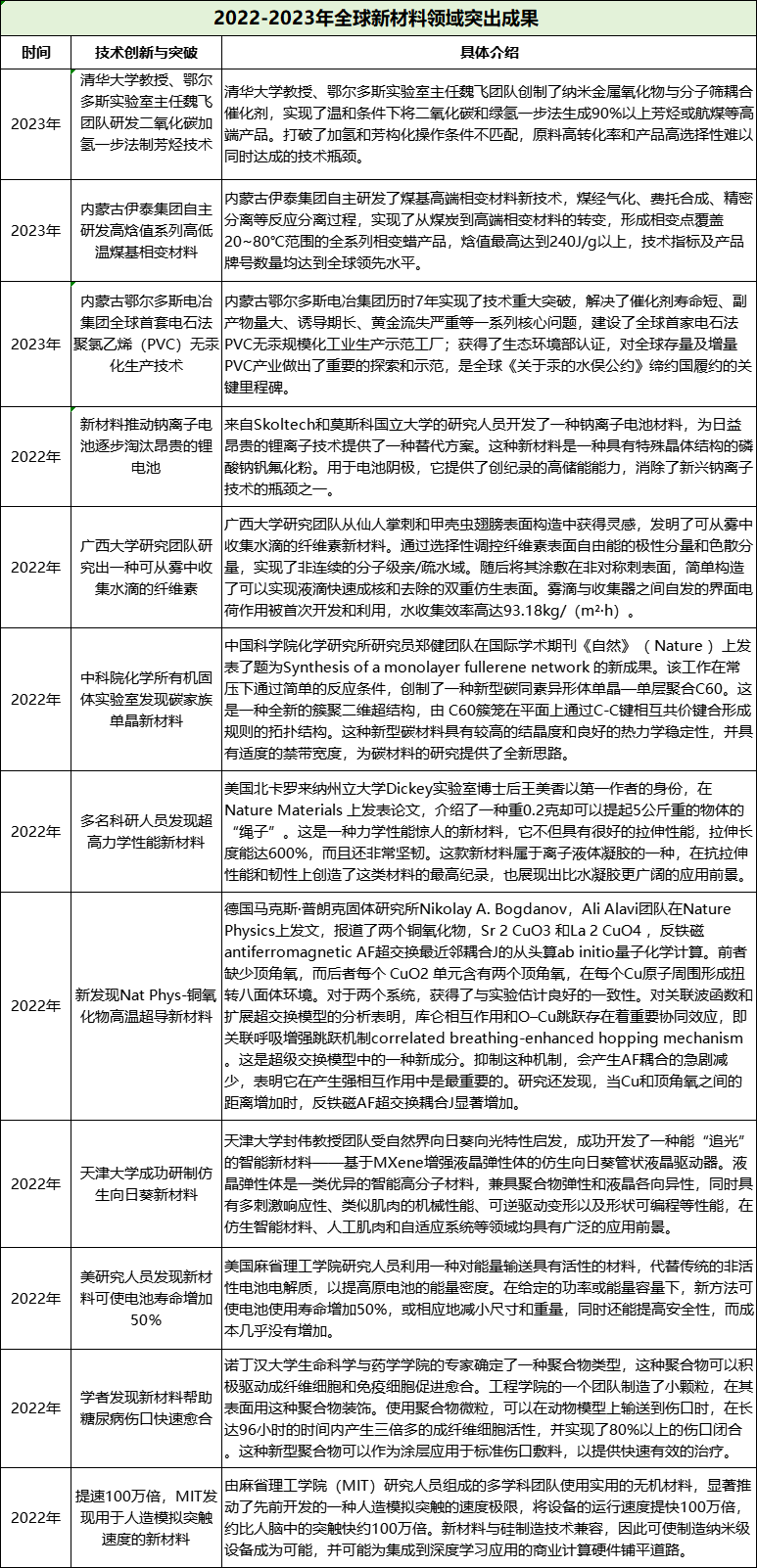V posledných rokoch Čína zrýchlila rozvoj strategicky vznikajúcich odvetví, ako sú informačné technológie novej generácie, výroba špičkových zariadení a nová energia, a realizovala významné projekty v národnom hospodárstve a obrannom priemysle. Priemysel nových materiálov potrebuje poskytnúť podporu a záruky a priestor pre budúci rozvoj priemyslu nových materiálov je obrovský. Podľa štatistík sa hodnota produkcie čínskeho priemyslu nových materiálov zvýšila z približne 1 bilióna juanov v roku 2012 na 6,8 bilióna juanov v roku 2022, s celkovým nárastom rozsahu takmer 6-násobku a zloženou ročnou mierou rastu viac ako 20 %. Očakáva sa, že hodnota produkcie čínskeho priemyslu nových materiálov dosiahne do roku 2025 10 biliónov juanov.
1. Prehľad odvetvia nových materiálov
Nové materiály označujú novovyvinuté alebo vyvíjané konštrukčné materiály s vynikajúcim výkonom a funkčné materiály so špeciálnymi vlastnosťami. Podľa Smerníc pre vývoj v odvetví nových materiálov sa nové materiály delia hlavne do troch kategórií: pokročilé základné materiály, kľúčové strategické materiály a špičkové nové materiály. Každá kategória zahŕňa aj špecifické podoblasti nových materiálov so širokým spektrom.
Nová klasifikácia materiálov
Čína prikladá veľký význam rozvoju priemyslu nových materiálov a postupne ho zaradila medzi národné high-tech odvetvia a kľúčové strategické rozvíjajúce sa odvetvia. Bolo formulovaných viacero plánov a politík na energickú podporu rozvoja priemyslu nových materiálov a strategické postavenie priemyslu nových materiálov neustále rastie. Nasledujúci diagram zobrazuje mapu nových materiálov pre 14. päťročný plán:
Následne viaceré provincie a mestá zaviedli aj rozvojové plány a špeciálne politiky na podporu rozvoja priemyslu nových materiálov.
2. Priemysel nových materiálov
◾Štruktúra priemyselného reťazca
Predchádzajúci reťazec priemyslu nových materiálov zahŕňa oceľové materiály, neželezné kovy, chemické materiály, stavebné materiály, textilné materiály atď. Stredný prúd nových materiálov sa delí hlavne do troch kategórií: pokročilé základné materiály, kľúčové strategické materiály a špičkové nové materiály. Následné aplikácie zahŕňajú elektronické informácie, nové energetické vozidlá, úsporu energie a ochranu životného prostredia, priemysel domácich spotrebičov, zdravotnícke zariadenia, letecký a kozmický priemysel, textilné stroje, stavebný a chemický priemysel atď.
Mapa reťazca priemyslu nových materiálov
◾rozloženie priestoru
Čínsky priemysel nových materiálov vytvoril model rozvoja klastrov so zameraním na Bohajský okraj, deltu rieky Jang-c'-ťiang a deltu Perlovej rieky a s výrazným rozložením priemyselných klastrov v severovýchodných, stredných a západných regiónoch.
◾Priemyselná krajina
Priemysel nových materiálov v našej krajine vytvoril trojúrovňový konkurenčný model. Prvú vrstvu tvoria prevažne podniky financované zo zahraničných zdrojov, pričom americké spoločnosti sú na čele. Japonské spoločnosti majú výhody v oblastiach, ako sú nanomateriály a elektronické informačné materiály, zatiaľ čo európske spoločnosti majú zjavné výhody v oblasti konštrukčných materiálov, optiky a optoelektronických materiálov. Druhú vrstvu tvoria prevažne popredné podniky, zastúpené spoločnosťami ako Wanhua Chemical a TCL Central. Vďaka priaznivej národnej politike a prelomom v oblasti špičkových technológií sa popredné čínske podniky postupne približujú k prvej vrstve. Tretiu vrstvu tvorí prevažne veľký počet malých a stredných podnikov, ktoré využívajú prevažne pokročilé základné materiály a čelia tvrdej konkurencii.
Konkurenčné prostredie podnikov v čínskom priemysle nových materiálov
3.Globálne konkurenčné prostredie
Inovačnými subjektmi v odvetví nových materiálov sú rozvinuté krajiny a regióny ako Spojené štáty, Japonsko a Európa, ktoré majú prevažnú väčšinu veľkých nadnárodných spoločností a absolútne výhody v ekonomickej sile, základných technológiách, výskumných a vývojových kapacitách, podiele na trhu a ďalších aspektoch. Spojené štáty sú medzi nimi komplexnou vedúcou krajinou, Japonsko má výhody v oblasti nanomateriálov, elektronických informačných materiálov atď. a Európa má zjavné výhody v oblasti konštrukčných materiálov, optiky a optoelektronických materiálov. Čína, Južná Kórea a Rusko sú tesne za nimi a v súčasnosti patria na druhú priečku na svete. Čína má komparatívne výhody v polovodičovom osvetlení, materiáloch z permanentných magnetov vzácnych zemín, umelých kryštálových materiáloch, Južná Kórea v zobrazovacích materiáloch, pamäťových materiáloch a Rusko v leteckých materiáloch. Z pohľadu trhu s novými materiálmi majú Severná Amerika a Európa v súčasnosti najväčší trh s novými materiálmi na svete a tento trh je relatívne vyspelý. V ázijsko-tichomorskom regióne sa trh s novými materiálmi nachádza v štádiu rýchleho rozvoja.
4. Vynikajúce úspechy v globálnej oblasti nových materiálov
Čas uverejnenia: 19. decembra 2023

